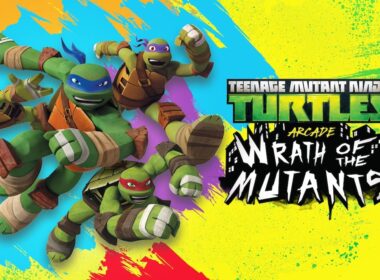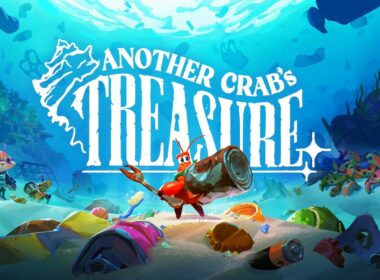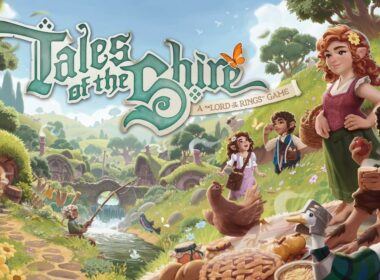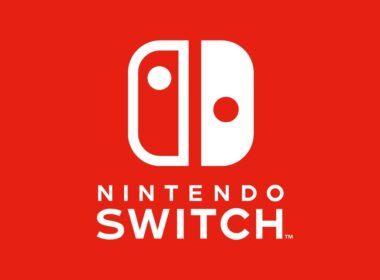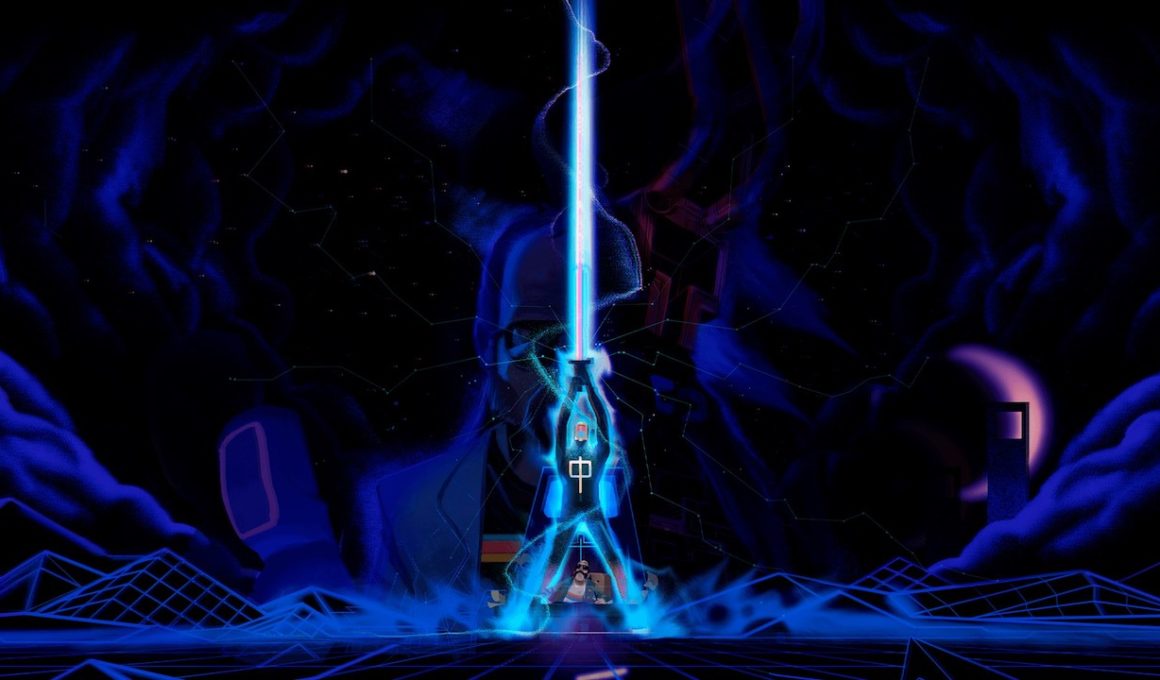Let’s face it, we’ve all had that childhood dream of being stuck inside a video game world, especially if you happen to grow up with the likes of TRON, ReBoot and Captain N: The Game Master. Barcelonian developer Studio Koba certainly did, for they have combined such influences with a strong dose of Ready Player One and The Matrix in Narita Boy, their techno-age pixelated action-platforming adventure.
We start our story with an adolescent gamer dragged from the safe confines of his bedroom, straight into the binary code of the Digital Kingdom. Greeted into this strange land as Narita Boy, he is informed by the Motherboard of his destiny to wield the legendary Techno-Sword fueled by the powerful analogue colours of the Trichroma energy source. With this new weapon in hand, Narita Boy must seek to unlock the lost memories of the Creator, and rid a viral army known as the Stallions led by the dark forces of “Him” before it’s too late.
Every pixel within every frame of animation in Narita Boy has been painstakingly hand-drawn across a whopping 20,000 sprites. The results are spellbinding as the red, blue and yellow colours representing the Trichroma clearly sets out a solid impression. Character designs and the quirky animations to accompany them brings the world to life with NPCs raving to techno music and robots dreaming of electric sheep. The memorable soundtrack is equally impressive, with synth sounds burned into my brain to the point where I would wake up for days on end humming the incredibly catchy theme song.
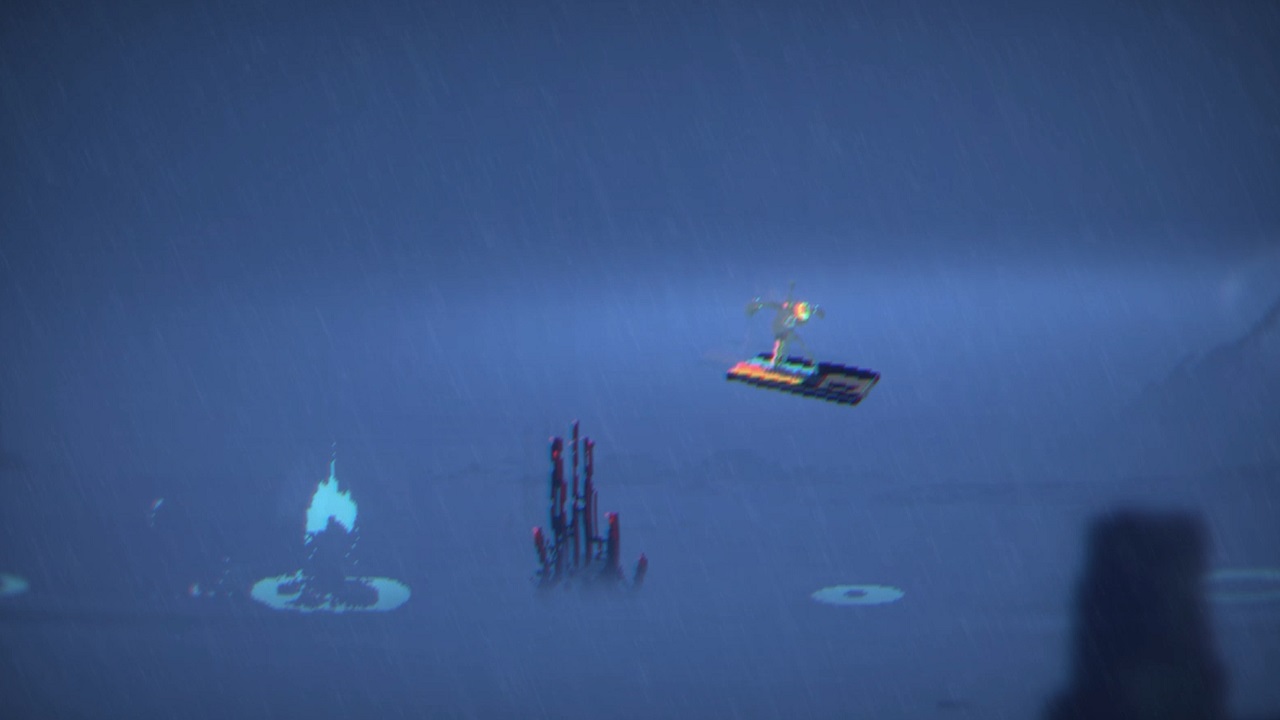
On the surface, Narita Boy certainly has all the groundwork for being a memorable experience. Yet, while a world like this needs little words to express its wondrous ambience and interesting style, the congested narrative and messy pacing can often suffocate the balance of the gameplay.
At its strongest, Narita Boy is essentially a hack ‘n’ slash game where throughout the adventure our hero adopts a solid move list of attacks. Dashing, shoulder-barging and the fluidity of sword strikes at various angles set up the flow of combat nicely, as does the huge variety of enemies constantly introduced.
The Techno-Sword can be charged for an almighty swing, doubled up as a shotgun and even inserted into Narita Boy’s chest seppuku-style to let off a devastating cannon blast. Moves can be so easily chained together in a way that, in theory, should provide a satisfying flow to swordplay.
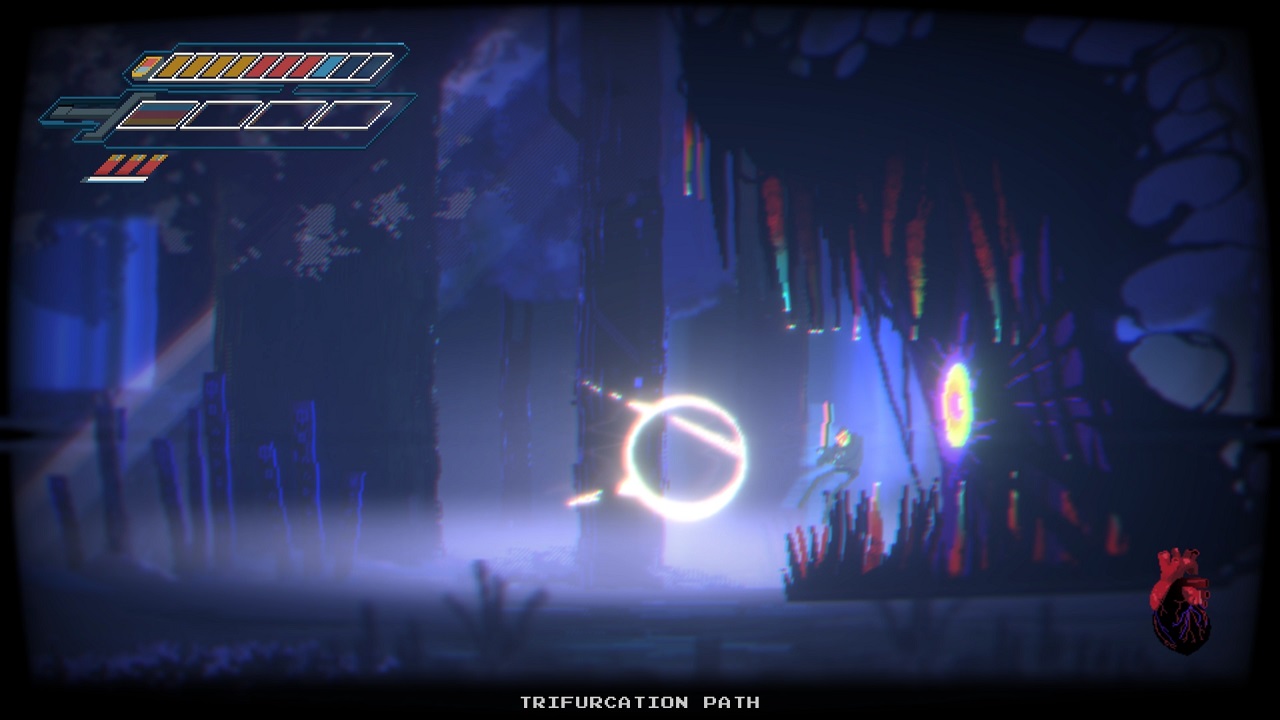
Unfortunately, the way enemies stubbornly stand their ground while absorbing a beating when they should be getting launched, bounced around and air-juggled cuts the mechanics short from feeling fantastic. Instead, combat results in little more than learning the basic enemy pattern and mashing out the button longer than feeling comfortable until the threat eventually goes away.
The more I thought about it, the more Narita Boy reminded me of an unseasoned Guacamelee! Super Turbo Championship Edition in how it shares similar tropes with the Mexican Metroidvania. In Guacamelee, combat stays consistently enjoyable, upgrades are always inventive, and most importantly, essential to both the combat system and stage design.
While riding a somewhat similar beat, Narita Boy never quite reaches the same heights as it only ever flirts with great ideas and spreads them thinly across the Digital Kingdom. It’s almost as if Narita Boy can’t decide what it wants to be. Sometimes it fancies itself as a sort of Metroidvania, other times an undeveloped platformer and oftentimes an average arena hack ‘n’ slasher. Everything has a general tendency to feel half measured and undercooked. It’s as if all the ideas are set firmly in place at a lack of a greater purpose.
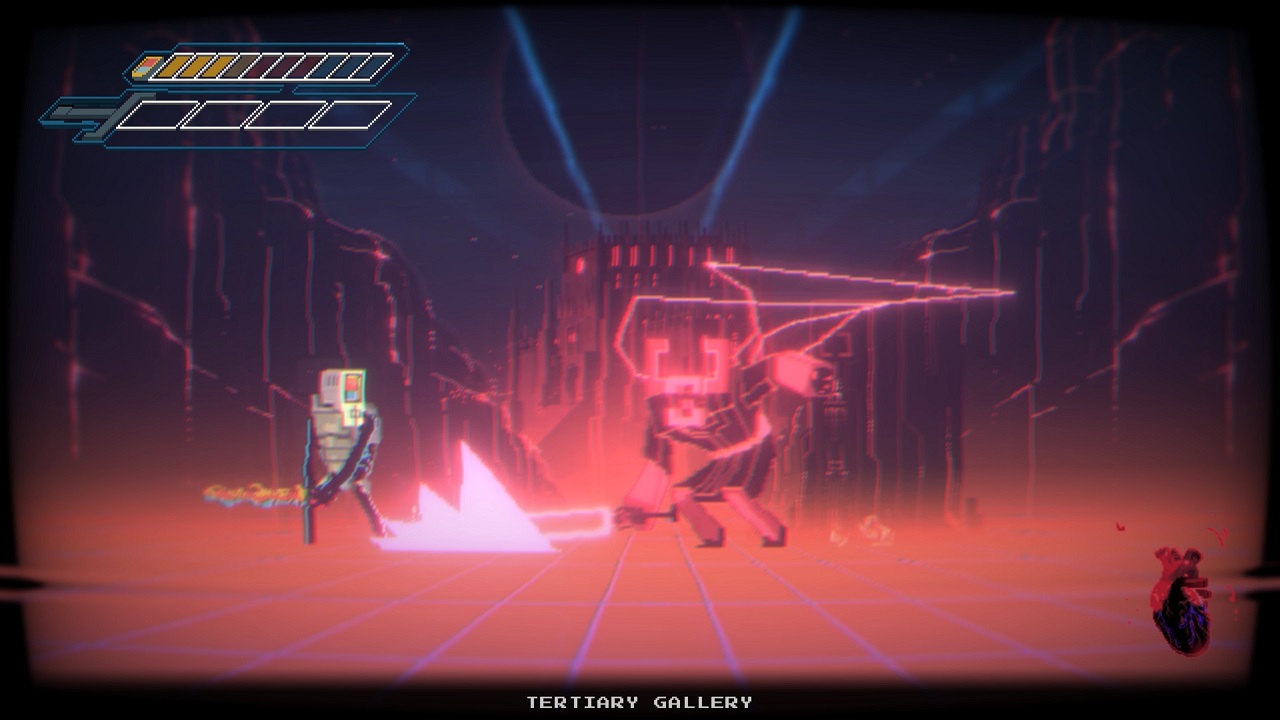
A giant portion of the gameplay consists of tediously running back and forth across several beautifully lit environments aimlessly fetch-questing for floppy disks known as Techno-Keys. The solution usually requires Narita Boy to seek the right NPC to talk to, and who are usually hidden away or awkwardly positioned to where sometimes it can be difficult to tell whether or not the NPC in question can be interacted with.
Another heavily-recycled task consists of searching environments for three hieroglyphic codes to power up teleportation stations, which is about as deep and as interesting as the puzzle elements get. Thankfully the clues for the hieroglyphic symbols are generally painted across walls or behind switches fairly close by to at least soften the blow of yet another long-winded easter egg hunt.
The concept of becoming the errand boy becomes so overused from the get-go, it makes exploration so much more of a chore than it needs to be. The absence of a map system to reference doesn’t help either, neither does the abundance of NPCs constantly spouting useless convoluted nonsense.
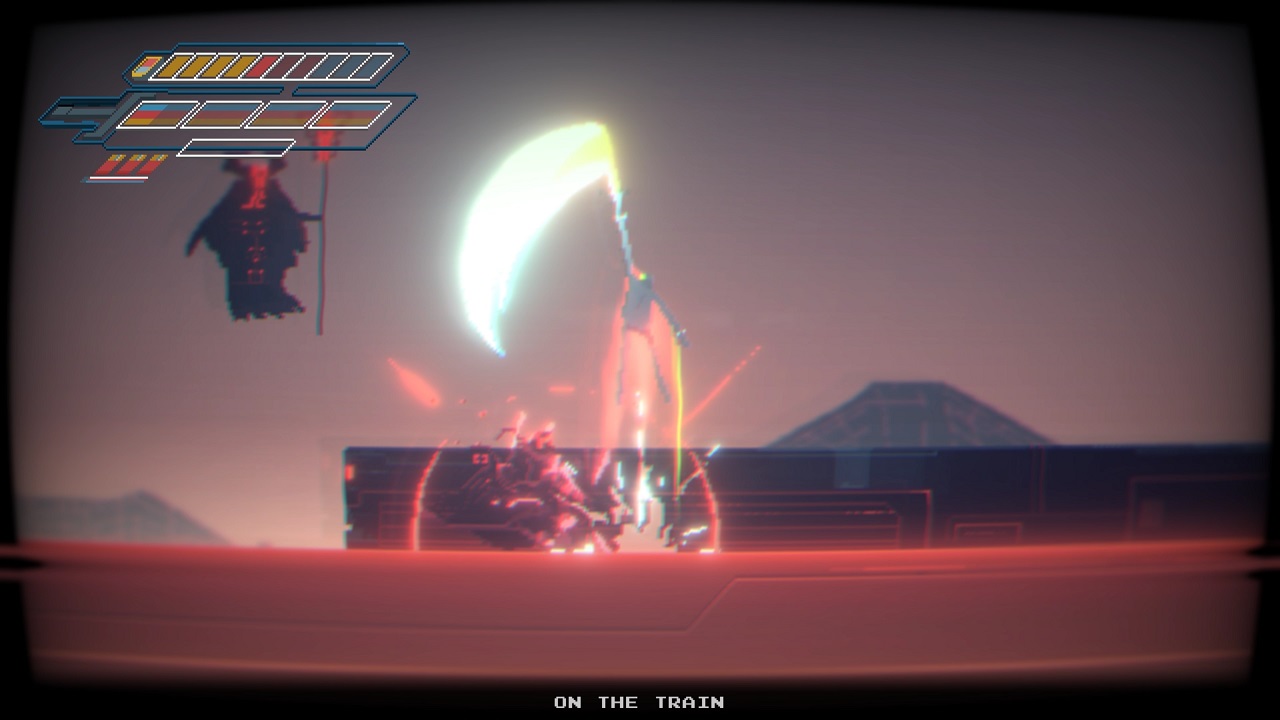
What makes things all the more unfortunate is that I genuinely loved the idea of what Narita Boy was trying to achieve from a narrative standpoint. Unlocking the memories of the Creator and learning of both his inspirations and the tragedies of his past are often heartfelt moments that touch upon very real-life experiences.
With that said, the same impact could have been just as effective if it wasn’t so keen on preaching its story like a Jehovah’s Witness wedging their foot inside your front door. Still, there are some genuinely fantastic little surprises and awe-inspiring moments sewn in throughout the adventure which I don’t want to spoil here in fear of blunting the experience even further.
Yet, despite feeling underwhelmed by the fat of Narita Boy’s gameplay, I still couldn’t help but walk away with a strong sense of admiration. The style, the premise, the concept and the influences that construct the world of the Digital Kingdom pixel by pixel are conjoined together in a way where it should be by all rights a complete win-win formula.
Not many games have quite stumped me with opposing thoughts in the same way as Narita Boy has, as I constantly questioned myself over what kind of lasting impression it gave me. On one hand, the visual and audio beauty of it all stayed with me for days, while on the other hand, I couldn’t shake off how everything was all clouded over by gameplay that never quite reaches its full potential.
Version Tested: Nintendo Switch
Review copy provided by Team17

